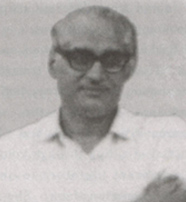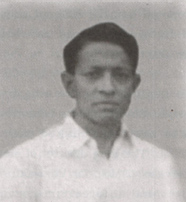2. THE FORMATIVE YEARS
2.7. Anantapur: the first model DTC
|
Dr. G D. Gothi |
Dr. GVJ Baily |
A district other than Tumkur had to be chosen to establish the first model district TB centre (DTC). The biggest event of the year was the start of the model district programme in Anantapur. Anantapur town is 130 miles north of Bangalore. It is one of the poorest district in India. On the 16th August 1961, it was inaugurated in the presence of a large number of officials from the district and handful of NTI staff and trainees of the first training course42. To achieve this, with Dr Gothi in the lead, many planning visits had been made earlier to establish rapport with the government officials of Andhra Pradesh. They had agreed to provide office space and to maintain it after it was commissioned. They also agreed to recruit the necessary staff and send key officers for training to NTI. As Mr Andersen reports: ...from the 17th to 24th of July, the senior staff of the NTI accompanied by six MO trainees will survey the health services in Anantapur District with a view to detailed planning and selection of the areas where the programmes will begin36... The programme will comprise the following elements:
1) A TB clinic, mainly serving Anantapur town;
2) BCG vaccination programme including referral of high prevalence groups
for further case finding;
3) Semi-mobile X-ray case finding at a few selected primary health centres
(PHCs);
4) Gradual development of sputum case finding in all PHCs and dispensaries;
5) Domiciliary treatment services based on PHCs and dispensaries assisted
by non-health development agencies.
This programme aims at the integration of TB control schemes with the existing GHS to reduce the TB problem in the community as economically as possible. In the DTC, the X-ray examination facilities were provided on three days in a week and sputum examination daily. In the sub-centres, weekly X-ray case finding was done by the mobile X-ray unit, and daily sputum examination by direct microscopy. To start with, our first batch of trainee doctors, HVs, LTs and XTs carried out the work and they trained the personnel on the spot to take charge when the trainees left. The patients diagnosed tuberculous were treated with INH only as the second drug was not available. The existing LF Dispensaries, PHU, village dispensaries or maternity sub-centres situated in the nearby villages were stimulated to undertake the treatment of diagnosed cases living in the vicinity and to collect sputum from symptomatic persons. The entire equipment including transport, mobile X-ray microscopes for all the centres, X-ray film and chemicals for sputum examination and X-ray, INH, petrol and stationery were supplied by the NTI.
Shortly after establishing the Anantapur DTC it became evident that case finding could be done at any place without difficulty but the major problem was that of keeping the patients on continuous treatment. Considerable time and effort was devoted to solve the problem of default. Only 66% of the TB patients were taking drugs regularly with a defaulter rate varying from 20% in one place to 54% in another, with the overall average at 34%. If timely steps were not taken, the situation would have gone out of control35.
The first test run of the DTC gave practical field experience to the NTI faculty. Thus, the form and content of the programme and the training procedures were pruned. In addition, it was discovered that there was an urgent need to add TB services to the GHS. Doctors and auxiliary personnel in these services were willing to take on their new functions42.
The Anantapur DTC became operational quickly and functioned well, because in addition to the state government’s component, the NTI staff also worked. By October 1961, the NTI trainers and trainees withdrew. From then on, there was a decline in the services of this DTP. The Anantapur programme suffered from not being recognised by the Andhra state government as essentially their responsibility43.

